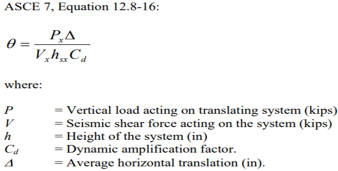MCE2
Structural
- Sep 5, 2024
- 2
Hello,
I am a long time reader but first time poster. I have an issue that has myself and a few others a little stumped. I have built a model in RISA Floor which I analyzed then moved to 3D for lateral analysis. Understanding flexible diaphragms are not well modeled, I was following the "springs" approach to essentially provide stability to the model. I did a separate diaphragm analysis by hand (basic 20G steel deck on joists) to verify diaphragm deflection.
Now my problem is, I can't figure out how to apply the springs and with what constant(s) to accurately model deflections of the building frame. This is a 25' tall box @ 160' long and 45' wide. Open front with moment frames along one long wall, braced bays at the short ends and the other long wall. What I am seeing is considerable deflection at the center of the long span of the building. My gut says I shouldn't need moment frames or even bracing between roof beams. I would expect the stiffness of the deck to be able to resolve the force into the end walls.
Does anyone have tips on how to handle this? I'm concerned I am overdesigning the steel by not relying on the diaphragm effects - or vice verse. Thank you!
I am a long time reader but first time poster. I have an issue that has myself and a few others a little stumped. I have built a model in RISA Floor which I analyzed then moved to 3D for lateral analysis. Understanding flexible diaphragms are not well modeled, I was following the "springs" approach to essentially provide stability to the model. I did a separate diaphragm analysis by hand (basic 20G steel deck on joists) to verify diaphragm deflection.
Now my problem is, I can't figure out how to apply the springs and with what constant(s) to accurately model deflections of the building frame. This is a 25' tall box @ 160' long and 45' wide. Open front with moment frames along one long wall, braced bays at the short ends and the other long wall. What I am seeing is considerable deflection at the center of the long span of the building. My gut says I shouldn't need moment frames or even bracing between roof beams. I would expect the stiffness of the deck to be able to resolve the force into the end walls.
Does anyone have tips on how to handle this? I'm concerned I am overdesigning the steel by not relying on the diaphragm effects - or vice verse. Thank you!

